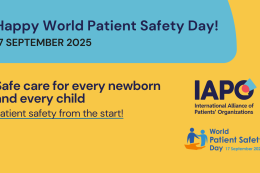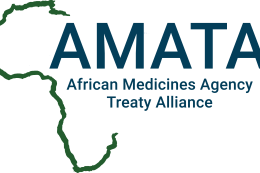Large-scale emergencies, health of migrants and primary care: what we said at WHA69

The importance of primary care
The first side meeting, attended by over 100 delegates, was held on strengthening primary care as a part of universal health coverage within the Sustainable Development Goals (SDG2030) strategy, with a view that good primary healthcare is a vital lifeline for many chronically ill patients. Need for acute care is avoided if well trained staff support patients to adhere to their treatments and take early action if they start slipping.
Jolanta Bilińska, IAPO Chair, stressed the importance of good primary care and how it will help countries achieve the other SDG2030s. With good primary care, a middle aged patient with a NCD can keep on working and supporting his family, a chronically ill woman can access education and maintain her small holding and market stall, and a child patient can access education: all goals that ultimately will reduce poverty (SDG1) (slides available).
Ethical interactions
Dr. Matthias Wienold, IAPO Treasurer, coming in with a unique approach of a physician and patient, addressed another side meeting jointly hosted by IAPO at the iconic International Red Cross and Red Crescent Headquarters (founded 1919) on a hill top opposite the UN Palace Of Nations. Dr. Wienold, along with Transparency International and the World Medical Association, spoke on 'Ethical Interaction between Patient Organizations and Health Care Partners' (slides available).
Countries work towards UHC
The last side meeting was held under Chatham House Rules with ministers from six South East Asian countries who are now embarking on establishing and/or strengthening universal health coverage. It was held on the back of the morning's debate on WHA agenda item 13.2 that called for all countries to establish sustainable universal health coverage by 2030. Issues discussed included how to achieve UHC using optimal mix of: 1) sustainable financing mechanisms 2) coverage for vulnerable society sectors 3) entitlement - extent of coverage 4) collaborative partnerships between the public and private sector and patients’ organizations
Our interventions during the week
We welcomed the Secretariat’s report, ‘Health in the 2030 Agenda for Sustainable Development’ and congratulated the Member States for having committed to achieving universal health coverage by 2030 at the 70th session of the UN General Assembly through UN General Assembly resolution 70/1, particularly through Sustainable Development Goal 3.8 (SDG 3.8).
IAPO reinforced the report’s recommendations that access to acceptable, affordable, safe and quality healthcare facilities, services, goods and devices is the first step towards enabling chronically ill patients to becoming productive and active contributors towards their national economic, social and cultural development. Investment in SDG 3.8, besides improving chronically ill patients’ health, will also improve their access to employment, education and training opportunities and support the achievement of other goals.
SDG 3.8 gives Member States a golden opportunity to collaborate globally to realise sustainable patient-centred health systems globally, and by putting ‘Health in all Policies’, chronically ill patients can be a part of the drive towards sustainable development for all by 2030. We strongly endorsed the Secretariat’s recommendation that the Health Assembly adopts the draft resolution recommended by the Executive Board in resolution EB138.R5.
See our official intervention here.
Agenda Item 14.6: WHO response to severe, large-scale emergenciesThe world has united to express concern for the welfare of chronically ill patients, especially child patients, who are either on the move, within refugee camps and/or internally displaced within regions affected by severe large-scale emergencies. This vulnerable group is facing an unprecedented scale of humanitarian and healthcare crisis as their continued access to vital lifesaving healthcare services, pharmaceuticals and health devices has been disrupted by health system collapse.
We urged that Member States take note of the Director General’s report and prioritise the health needs of these patients by undertaking a timely response to their critical needs in order for them to maintain the highest possible level of health. IAPO continues to support the WHO strategy to establish regional emergency solidarity funds to ensure a more predictable and reliable funding mechanism for emergency response in high-risk regions.
See our official intervention here.
Agenda 14.7 Promoting the health of migrantsIAPO expressed concerns for the welfare and security of chronically ill migrant, displaced and refugee patients, especially child patients, whose health is at risk due to discontinued healthcare and risk of abuse, violence, exploitation and discrimination. IAPO noted that despite the existence of ratified international human rights standards and conventions to protect the rights of migrant and refugee patients, including their right to health, many such patients lack access to healthcare services and financial protection for health.
We wanted the Member States to note the Secretariat’s report and endorse the priorities identified in Section 11 Future Priorities for Member States, partners and other stakeholders in addressing the health needs of migrants and refugees. IAPO urged that Member States develop and adopt coherent migrant-patient sensitive health policies that ensure equitable access to culturally and linguistically appropriate healthcare services regardless of status and without discrimination or stigmatization, and to develop a culturally competent health workforce able to address the needs of such patients.
See our official intervention here.




